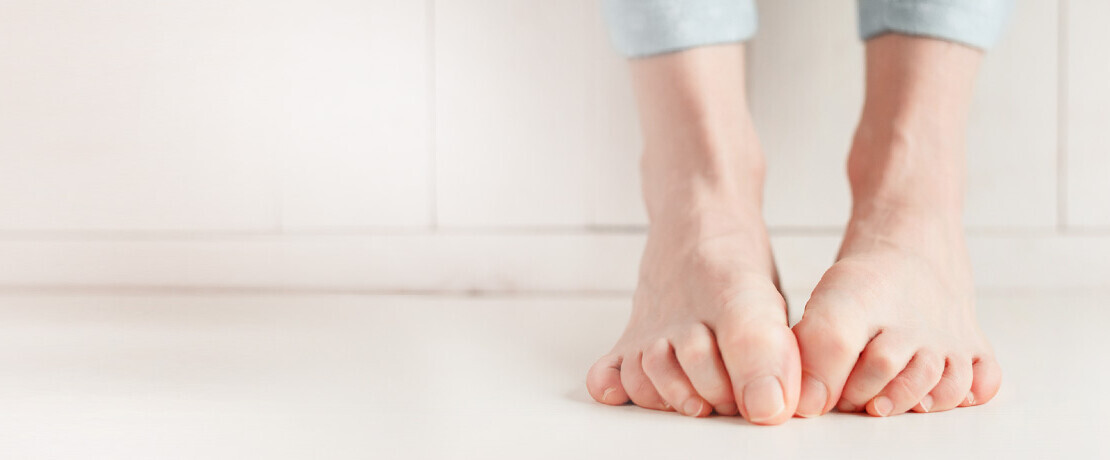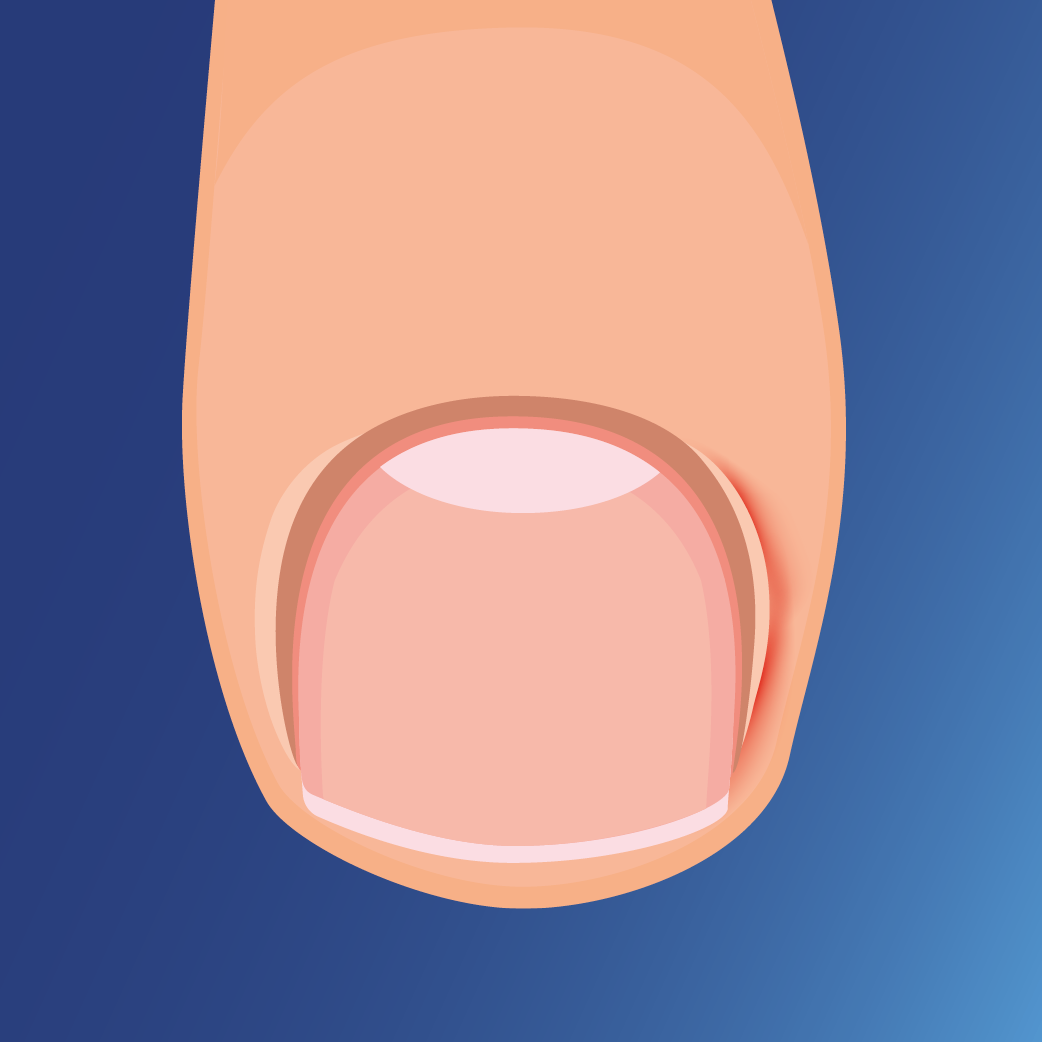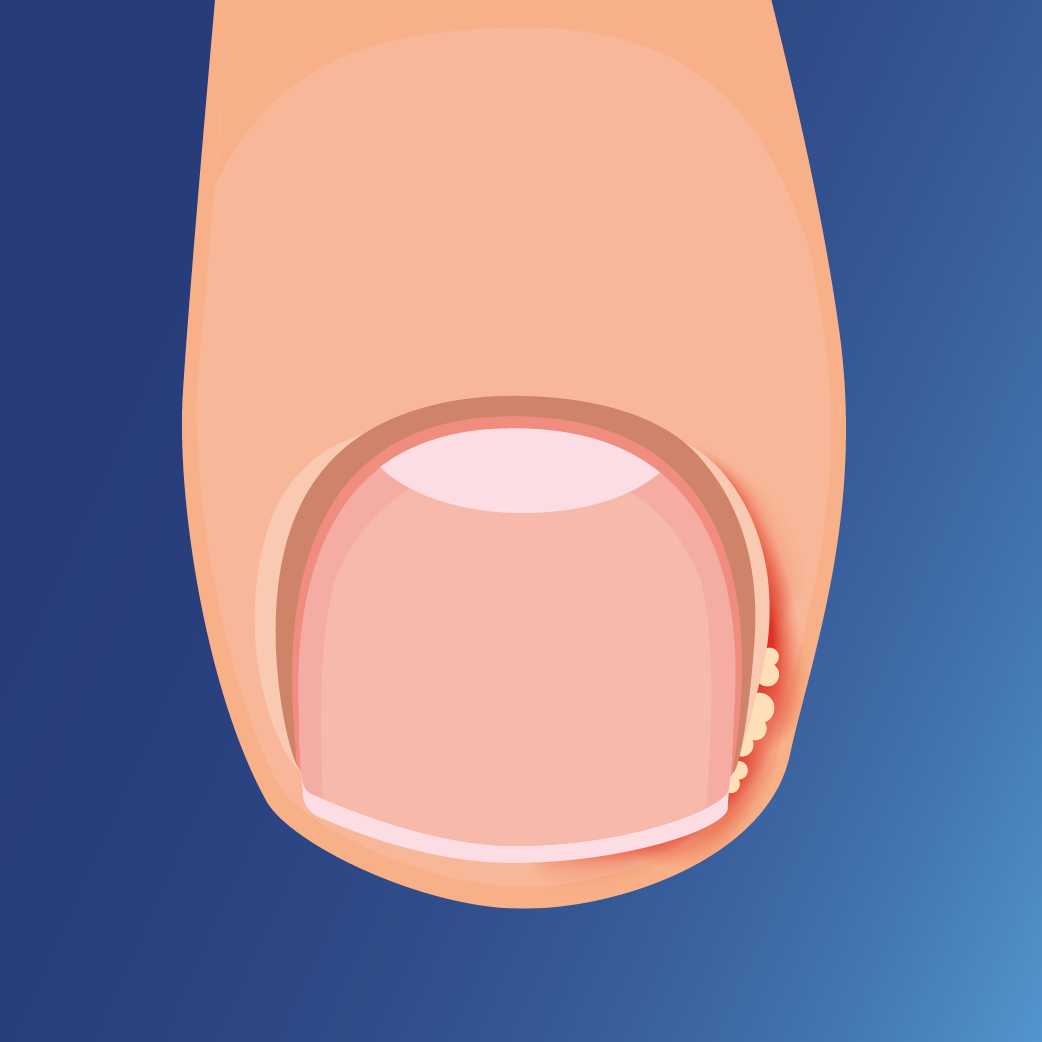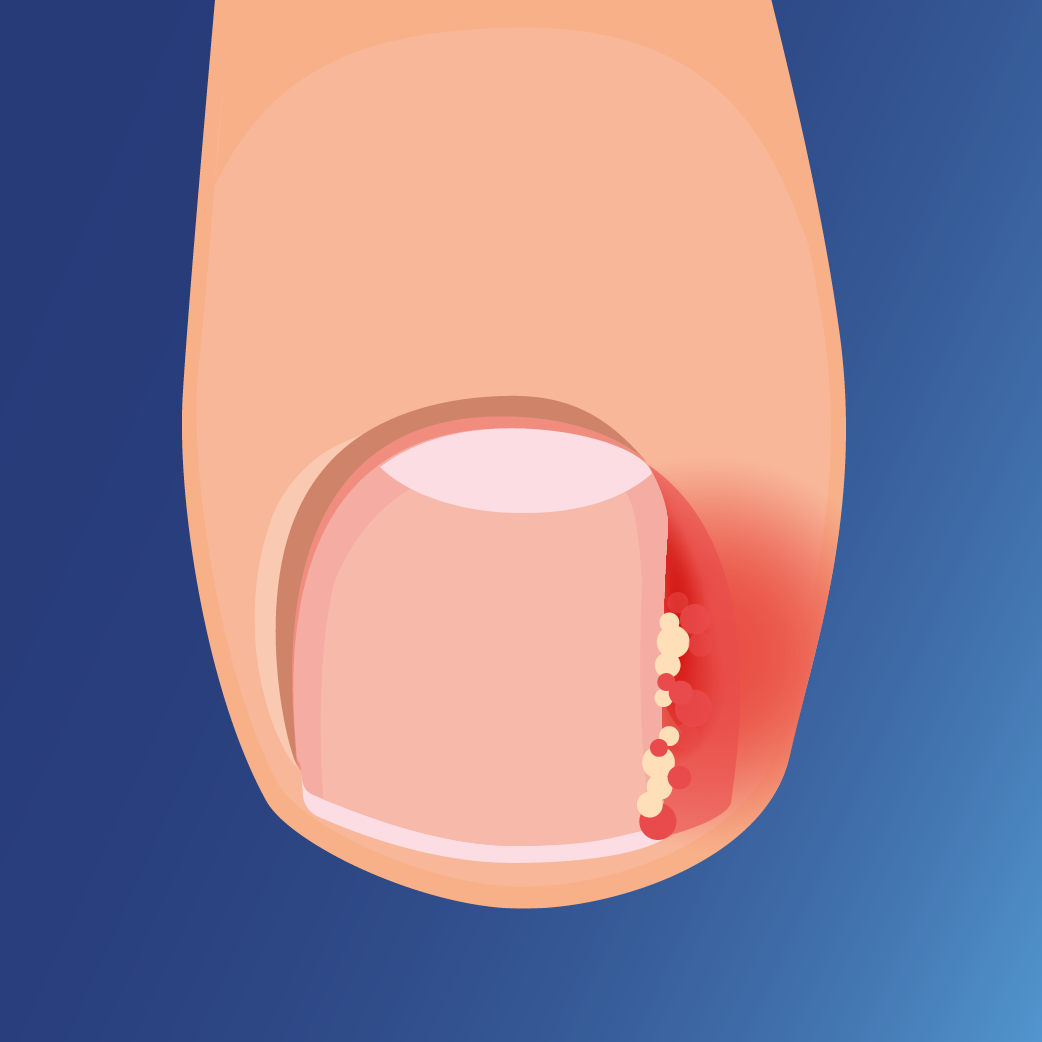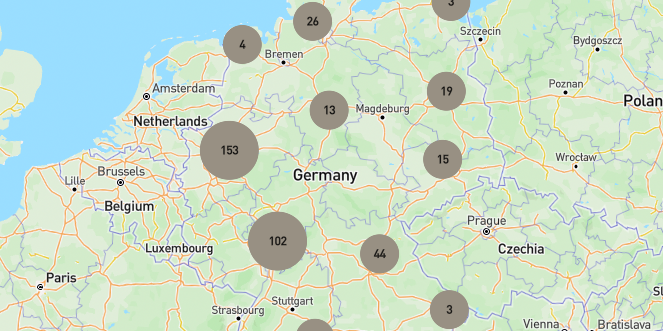Ingrown nail (Unguis incarnatus)
An ingrown nail is medically referred to as "unguis incarnatus" or "onychocryptosis". This painful problem usually occurs on the big toe. Men tend to struggle with ingrown nails slightly more often than women.
An ingrown nail occurs when the toenail grows sideways into the nail bed or the nail fold and thus deviates from its intended direction of growth. Although this may seem inconspicuous at first, the significance of this condition should not be underestimated. Treatment is often lengthy, especially for people with type 2 diabetes mellitus, who are particularly at risk due to wound healing disorders and complications. For this reason, regular foot checks by a foot professional are of crucial importance.
Symptoms of ingrown toenails
The first symptoms of an ingrown nail (Unguis incarnatus) are redness and slight swelling of the nail fold, followed by stabbing to throbbing pain or an inflammation of the nail bed.
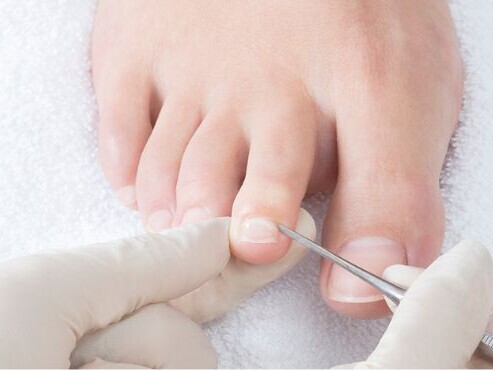
The following symptoms vary depending on the stage:
- Pain in the area of the lateral nail fold (the depression running along the lateral edges of the nail plate)
- Thickening of the lateral nail fold
- Reddening of the nail fold or toe
- Restriction of movement - pain when walking
- Weeping tissue
- Tissue growth over the nail
- Pus formation (caused by bacteria)
Causes of ingrown nails
The most common causes of an ingrown nail are errors when cutting the nail. The nail is often cut round and the nail bed is damaged or the lateral edge is cut deeper, leaving small spurs that then grow deeper into the nail fold.
However, heavy perspiration and tight shoes can also promote ingrown toenails. Concomitant diseases such as diabetes mellitus often promote ingrown toenails. If the feeling of pain in the feet is then lost due to neuropathy (nerve damage), pressure points are often not noticed and the development of ingrown toenails is exacerbated. Regular foot checks for diabetes are therefore particularly important.
External factors:
- Incorrect nail cutting
- Wearing too tight and incorrect shoes
- Shoes that cause heavy sweating
- Wearing compression or support stockings that are closed at the front
- Sports activities (e.g. soccer, jogging, squash)
- Heavy perspiration
- Incorrect strain
Genetic factors:
- Deformities of the toes
- Foot deformities
- X-position of the big toe (hallux valgus)
- Flat foot
- Splayfoot
- Crossing of the toes
- Excessively long toes
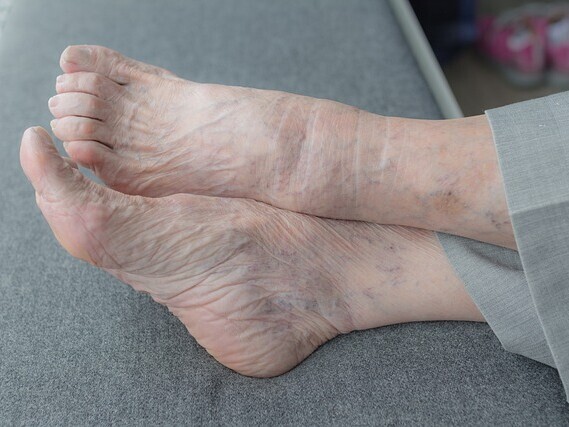
Diseases / ageing process / pregnancy:
- Normal ageing process, limited mobility, more difficult foot care in old age
- Diabetes mellitus
- Hormonal changes
- Growth disorders (e.g. roll nails or after nail mycosis (onychomycosis))
- Medication (chemotherapy, cytostatics, hormone preparations, anti-inflammatory drugs)
- Fungal nail infestation
- Heavy sweating (hyperhidrosis)
- Pregnancy
Treatment of an ingrown toenail
Ingrown toenails should not be observed and treated independently. Whether it concerns children, adolescents or adults, it is advisable to consult a doctor or foot professional. This will not only ensure an appropriate diagnosis, but also treatment tailored to the individual case and recommendations to prevent further complications.
Different options are available for treating an ingrown nail, depending on the stage or severity. There are conservative therapies, including nail correction systems, and surgical forms of therapy.
Whether a nail correction system should be used or whether a surgical procedure is required should always be decided together with the treating doctor and the foot professional.
Onyfix - Gentle nail correction for ingrown toenails
Nail correction braces were already being used in the 19th century to treat ingrown nails. The technique only became more widespread in the second half of the 20th century
Onyfix was launched on the market as a medical device in 2017. The Onyfix nail correction system is an innovative product for the painless treatment of ingrown and curled nails (Unguis incarnatus). Almost all forms and stages of ingrown, curled and deformed nails can be treated with the Onyfix nail brace. Onyfix is not only user-friendly, but also provides patients with a pain-free and non-invasive (no tissue damage) treatment to correct toenails. In addition, the system can be used individually and is quick and easy to apply.
As Onyfix is not hooked underneath, this plastic brace can also be used in cases of inflammation and is particularly suitable for patients with diabetes mellitus, small children and patients with anxiety disorders.

